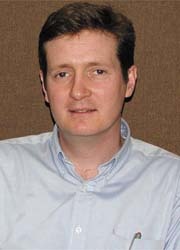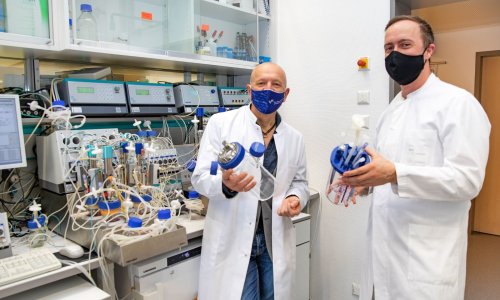Ireland's Institute of Molecular Medicine
Report: Mary Black
Since the completion of the 13-year human genome project in 2003, molecular scientists have been delving deeper into the world of cells.

Part of a groundbreaking research partnership in Ireland is the Institute of Molecular Medicine at Trinity College Dublin (http://www.tcd.ie/IMM) a 4,500 m2 state-of-the-art facility dedicated to research into the molecular basis of human disease. Completed in 2003, this multidisciplinary research institute houses 19 research teams, including about 130 residents. Major areas of work cover cell biology, immunology and the genetics of complex disease.
IMM’s cell biology research is based around High Content Screening Analysis (HCSA), which uses a high definition microscope to automatically and quickly tracks the individual wells of 96-well plates. Cells in the wells are kept alive and advanced software powering the camera in the microscope captures real time images of each cell as it moves over the wells. For example, to see how a cytokine can activate a T cell, researchers can label proteins of interest within the cell and then photograph the entire process, observing whether the proteins move within the cell and what they do, and tracking individual cells within each well, cataloguing movement, changes of shape and events with the cells. The IMM was one of Europe’s first centres to acquire such technology and now has three of these advanced microscopes.
This technology allows a researcher specifically to target Messenger RNA (mRNA) that has been identified for an individual gene. In a ‘knock down’ experiment, mRNAs are taken out and the result on the cell observed. A worldwide study is underway to identify the effects of knocking down mRNAs for all genes in the genome; a process that would be impossible without the use of HCSA technology. Once they are all tested we will have a much better idea of the specific role of each gene in a particular disease process or in cell function. The function of many genes is still unknown; it is painstaking work to finding out what they actually do, so we can learn why two cells with the same genetic component – e.g. a T cell and a liver cell – are so different and to direct how those cells behave. ‘Blocking T cells from moving or migrating is key to understanding the inflammatory process. For example, if we can stop a T cell from excreting IL2 we may have the basis of a powerful anti-inflammatory drug,’ IMM’s Dr Ross Mc Manus explains.
The Centre is also conducting soon to be patented work on biomarkers for sepsis, to predict which patients will do well and which will not. Cytokine levels appear to be key, patients who mount a stronger immune (or inflammatory) response, evidenced by high cytokine levels, appear to do better. Being able to predict the 40% of septic patients who will need intensive care could soon transform the hospital management of sepsis.
19.11.2008











